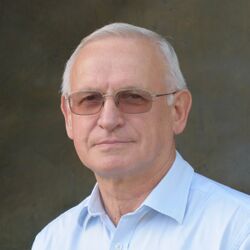C1.2 "Breakwell Lecture" - Small Satellites Dynamics and Control: Retrospect and Future
Symposium: C1. IAF ASTRODYNAMICS SYMPOSIUM
Session: 2. Attitude Dynamics (2)
Day: Wednesday 04.10.2023
Time: 10:15
Room: BCC B4

Mikhail OVCHINNIKOV
Chief Researcher and the Head of Space Systems Dynamics Department, Keldysh Institute of Applied Mathematics
Russia
Small satellites offer a number of well-known benefits, such as low cost, simplified development, manufacturing, launch and operation, as well as their consequent accessibility and utility for a wide range of users, from universities to large space agencies. One of the conceptual advantages of small satellites is the possibility to combine the existing practice with novel techniques and non-verified, sometimes risky, approaches. This feature refers also to development of small satellites dynamics models and motion control algorithms. In the beginning of the small-satellite era, passive and semi-passive techniques were used to provide attitude without any control of orbital motion having been provided by conditions of the piggy-back launch or by orbital-station deployment. Emergence of multi-satellite constellations and, next, formations demanded to ensure the relative distance and even relative motion which cannot be solved without proper attitude motion, even if orbital motion is provided without fuel. Nowadays tendency to implement small satellites in interplanetary and even beyond the Solar System missions requires to make use of available physical knowledge and fresh mathematical techniques. The paper presents the author’s accomplished experience in the field since 1980’s accompanied by the results of his colleagues and other small satellite fans, up to the prospection on the subject.
